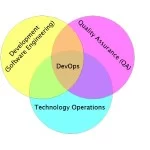Docker Buildx: Understanding the Multi-Platform Build Process
Introduction
Docker Buildx represents a significant evolution in Docker’s build capabilities, enabling developers to create container images for multiple platforms from a single codebase. This document explores how Docker Buildx works under the hood, from initialization to output processing, with a visual representation of the entire workflow.
How Docker Buildx Works: A Detailed Explanation
At its core, Buildx is powered by BuildKit, Docker’s next-generation builder engine. To understand how it functions, we need to examine its architecture, underlying technologies, and the processes that enable its multi-platform capabilities.
The Foundation: BuildKit
BuildKit was designed to address limitations in the original Docker build system with several key improvements:
BuildKit introduces a fundamentally different approach to container builds through a directed acyclic graph (DAG) of build operations. Instead of executing Dockerfile instructions sequentially, BuildKit analyzes the entire Dockerfile and creates an execution plan where independent steps can run in parallel.
For instance, if you have two COPY commands that don’t depend on each other, BuildKit can execute them simultaneously, significantly reducing build time. The original Docker builder would have processed these operations one after another.
The Architecture of Buildx
Buildx extends Docker’s CLI by adding new commands and capabilities. It operates through several key components:
1. Buildx Drivers
Buildx supports multiple “drivers” that determine where and how builds are executed:
- docker: Uses the BuildKit library embedded within the Docker daemon
- docker-container: Runs BuildKit in a dedicated container, providing isolation from the host environment
- kubernetes: Executes builds within a Kubernetes cluster
- remote: Connects to a remote BuildKit instance
When you execute a multi-platform build, the driver manages the creation of builder instances for each target platform.
2. Builder Instances
A builder instance is a BuildKit environment capable of executing builds. When you create a new builder:
1 | docker buildx create --name mybuilder --platform linux/amd64,linux/arm64 |
Buildx sets up a builder instance with support for the specified platforms. For platforms different from your host, it configures either:
- Native building: If you’re on a compatible architecture
- Cross-compilation: Using toolchains to build for different architectures
- QEMU emulation: For more complex scenarios requiring full system emulation
3. Build Context Processing
When you initiate a build, Buildx processes your build context (the files sent to the builder) more efficiently than traditional Docker builds. It:
- Computes the difference between the previous and current build contexts
- Transfers only changed files to the builder instance
- Utilizes content-addressable storage to reuse unchanged content
This drastically reduces the data transferred for incremental builds, especially for large projects.
The Buildx Process Flow
The following sections detail the step-by-step process of a Docker Buildx build, from initialization to output processing. This represents the complete workflow as visualized in the accompanying diagram.
1. Initialization Phase
When you run a command like:
1 | docker buildx build --platform linux/amd64,linux/arm64,linux/arm/v7 -t myapp:latest . |
Buildx:
- Validates the specified platforms are supported by your builder instance
- Prepares builder instances for each target platform
- Creates a build plan for each platform
- Sets up the necessary emulation or cross-compilation tools
2. Builder Setup
During this phase, Buildx:
- Configures QEMU emulation or cross-compilation toolchains for platforms different from your host
- Prepares the build environment with necessary dependencies and configurations
- Ensures all required tools are available for each target platform
3. Context Processing
The build context (your source files) is processed efficiently:
- The system scans all files in the specified directory
- Content hashes are computed for each file
- Only files that have changed since the previous build are transferred
- Content-addressable storage enables reuse of unchanged files
4. Build Planning
Before actual execution:
- The Dockerfile is parsed and converted into build instructions
- A Directed Acyclic Graph (DAG) of operations is created
- The system identifies which steps can run in parallel
- The build plan is optimized for efficiency
5. Execution Phase
During execution, Buildx:
- Determines whether to perform single or multi-platform builds
- For multi-platform builds, initiates parallel build processes
- For each platform:
- Sets environment variables like TARGETPLATFORM, BUILDPLATFORM, TARGETARCH
- Pulls the appropriate base images for that platform
- Executes build steps according to the optimized DAG
- Applies platform-specific optimizations
- Creates platform-specific container images
6. Output Processing
The final phase handles the build outputs according to the specified destination:
- For registry pushes:
- Creates a manifest list linking all platform-specific images
- Pushes all images and the manifest to the registry
- For local Docker engine:
- Loads the image (limited to single platform)
- For tarballs or directories:
- Exports the build artifacts to the specified location ( tarball or directory )
Visual Representation of the Docker Buildx Process
The following diagram illustrates the complete Docker Buildx workflow, showing how builds flow through the various stages from initialization to output processing:

Practical Example: Tracing a Buildx Build
Let’s trace what happens in a real-world example:
1 | docker buildx build --platform linux/amd64,linux/arm64 -t username/myapp:latest --push . |
- Context Processing: Buildx scans the build directory and prepares the context
- Builder Selection: It selects or creates builder instances for both platforms
- Concurrent Builds: Two parallel build processes start, one for each platform
- Environment Configuration: Each build has its environment variables set:
- For AMD64 build: TARGETPLATFORM=linux/amd64, TARGETARCH=amd64
- For ARM64 build: TARGETPLATFORM=linux/arm64, TARGETARCH=arm64
- Dockerfile Execution: Each build follows the Dockerfile instructions:
- Base images are pulled for the respective platform
- Platform-specific optimizations are applied
- Binary compilation uses appropriate toolchains
- Image Creation: Two distinct container images are created
- Manifest Generation: A manifest list is created pointing to both images
- Registry Push: Both images and the manifest are pushed to the registry
Advanced Considerations
Content-Addressable Storage
Buildx uses content-addressable storage where files are identified by their content hash. This enables:
- Precise cache invalidation only when content actually changes
- Efficient sharing of identical layers across builds
- Concurrent access to the same content by multiple build processes
Performance Factors
The performance of Buildx multi-platform builds depends on several factors:
- Host architecture: Building for your native architecture is fastest
- Emulation overhead: QEMU emulation adds significant overhead
- Build parallelism: Multiple cores allow concurrent platform builds
- Cache efficacy: Well-structured Dockerfiles maximize cache hit rates
- Network bandwidth: For registry pushes and distributed caching
Conclusion
Docker Buildx represents a sophisticated build system that extends Docker’s capabilities far beyond the original build command. By leveraging BuildKit’s advanced architecture, content-addressable storage, and parallel execution model, it enables efficient multi-platform builds from a single source.
The system’s ability to handle cross-compilation, emulation, and manifest creation transparently makes it possible to target diverse deployment environments from a single development workflow. This capability has become increasingly important as computing environments diversify across cloud, edge, and IoT platforms.
Understanding how Buildx works under the hood helps developers optimize their build processes, structure their Dockerfiles efficiently, and fully leverage the power of multi-platform container development.




